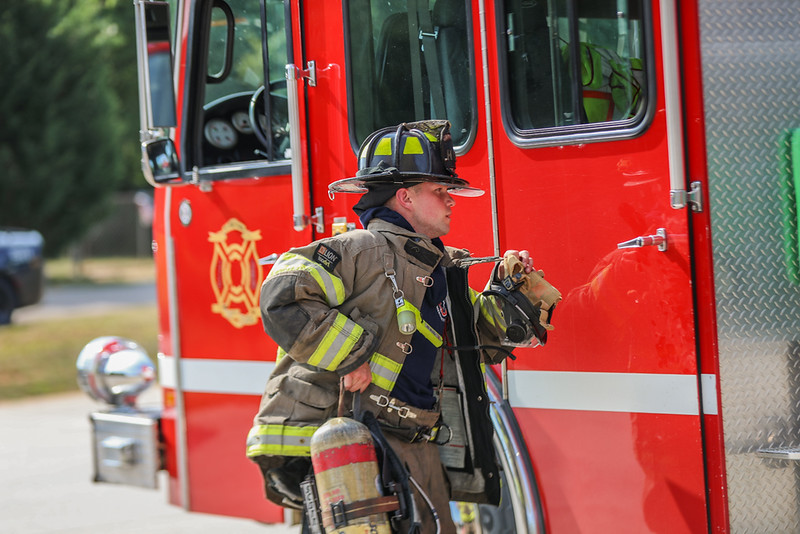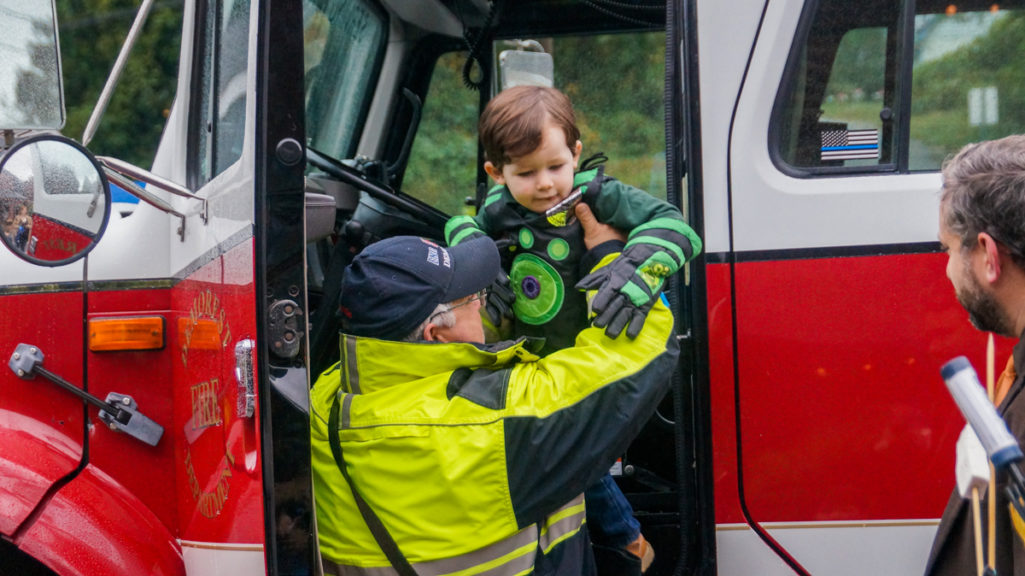
Habersham County Emergency Services respond to fire and medical calls through the county, saving lives every day. But first responder staffing shortages have proven to be a challenge county-wide, and HCES is looking for ways to bring on more staff.
To be fully staffed, according to HCES Chief Jeffrey Adams, the department needs to have 19 people on staff each day. Right now, they’re running eight people short.
The county has brought in incentives, like premium pay, for first responders to help bring in more workers with that staff shortage.

“It’s extra money if you’ll come in and work, and to a degree, that helps some, but it hasn’t been filling all the needs,” Adams says.
Adams says that HCES is able to get the work they need to do done and that they’re able to keep the county safe, but it’s thanks to HCES staff being willing to work extra hours. At the same time, though, rewarding that hard work with promotions isn’t something the department can easily do with its staffing limitations.
“We’re holding off on some promotions just because in promoting people, then they come off of trucks,” Adams says. “There’s been times when, for instance, the captain hasn’t been able to ride in his vehicle because he’s a paramedic and he’s had to staff an ambulance.”
Solving the problem with job postings and premium pay is a start, but it isn’t the answer. Adams and former HCES Director Chad Black both say that the solution to staffing emergency services starts with investing in the community— specifically, in young people.
Being seen in schools
HCES is working on bringing EMS and firefighter programs to Habersham Central High School that would let high school students jumpstart their careers in emergency services, giving them an opportunity to walk across the stage at graduation and right into a career.
Black told Now Habersham that offering training opportunities like those proposed is “growing our own” emergency services workforce in Habersham County. He believes giving local citizens the opportunity to train and join the force is the way to grow their staff to the size they need.
“If we start growing our own and training them as an EMT, firefighter and medic, and they sign contracts that they have to work here for an extended period of time or they have to pay the county back, that’s going to help,” Black said.
Adams agrees, saying that bringing those new graduates onto the force will help the community and emergency services grow. He hopes that getting HCES involved in schools can start even sooner than high school, though.

“I think that if we start getting back into the elementary schools, and those kids start seeing us, and seeing the firemen, and seeing the firetruck and seeing the ambulance, and you stay with them and you stay involved with them all the way up to their high school careers, you might plant some seeds,” Adams says.
He hopes to start a program where fire stations throughout the county, including city departments, “adopt” a school where emergency services can be involved in young students’ lives. He says that could be mentoring, eating lunch with students or even reading to them would all make an impact— it’s about being seen.
“The sheriff’s department, they’ve got the school resource officers, and I think they’ve got a special relationship with the kids in the school,” Adams said. “And we need to be there, we need to be invested in those kids.”






